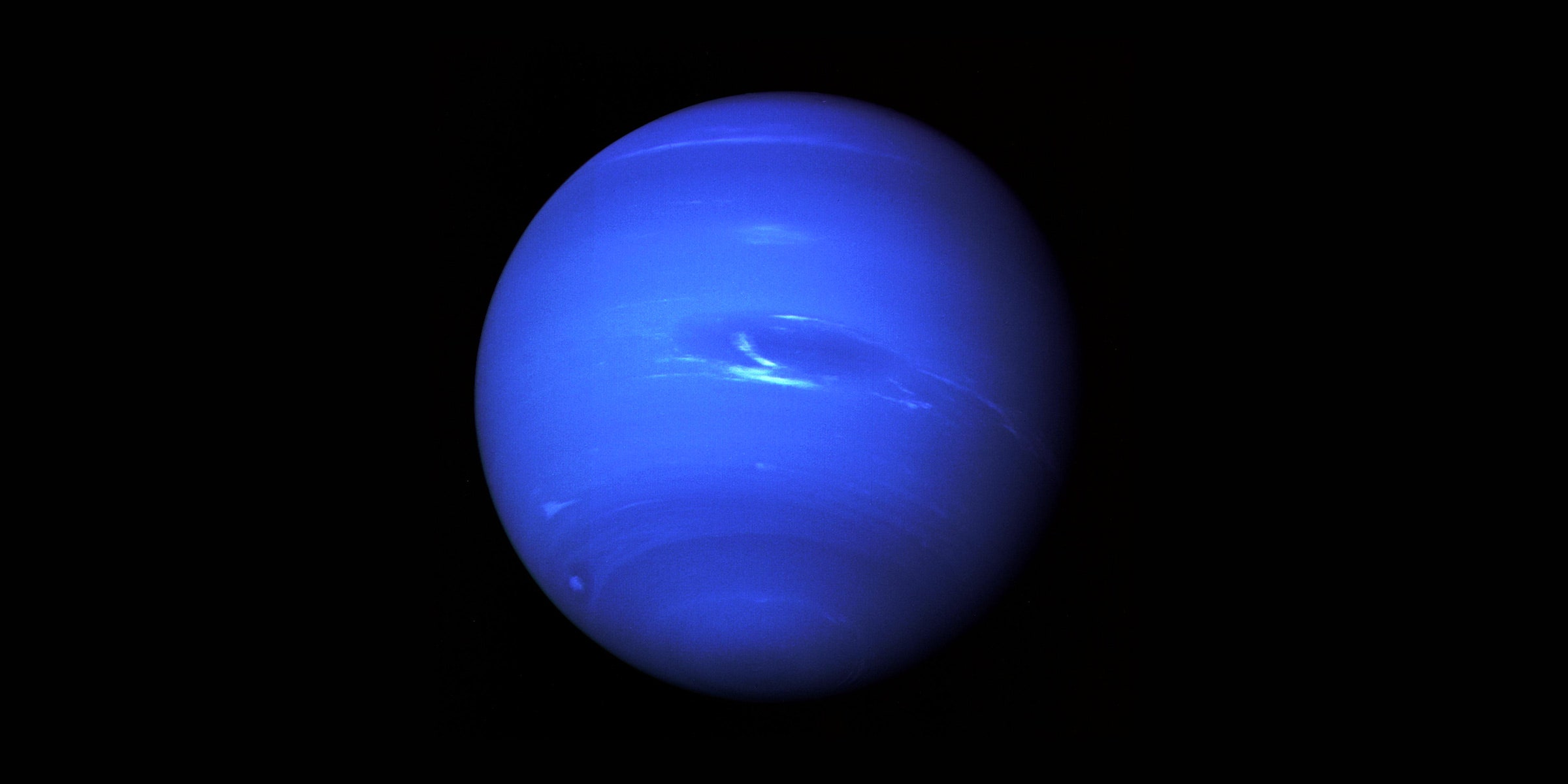Neptune is invisible to the naked eye. It was discovered in 1846 by Urbain Le Verrier because something disrupted the orbit of Uranus. The astronomer then made calculations and located the planet in writing before observing it on the telescope. It is a planet of magnitude 7.8 and almost twice as small as Saturn (2.9 “vs. 5”).
Located 4.5 billion km from the Sun, 30 times the distance from Earth to the Sun, Neptune puts a little more than 164 years to revolve around him. It is almost as big as Uranus with a diameter of 49528 km. It is 17 times heavier than the Earth.
Like all giant planets, Neptune’s atmosphere is mainly composed of hydrogen and helium supplemented with a little methane. The temperature at the top of the clouds is about -222 ° C and warms up as it sinks into the atmosphere. Its core is bulky and extends to 2/3 of its radius.
As on Uranus, methane absorbs above all the red light emitted by the Sun, reflecting the blue light, giving Neptune a beautiful blue color.
The winds are blowing violently with a speed that reaches locally 2000 km / h in dark spots! There are also white clouds of methane in its atmosphere. They look like our altitude cirrus. None of these clouds is permanent and Neptune sometimes has a uniformly blue disk with no detail.


i love this website
a
let’s gooooo
let’s gooooo
gghhj